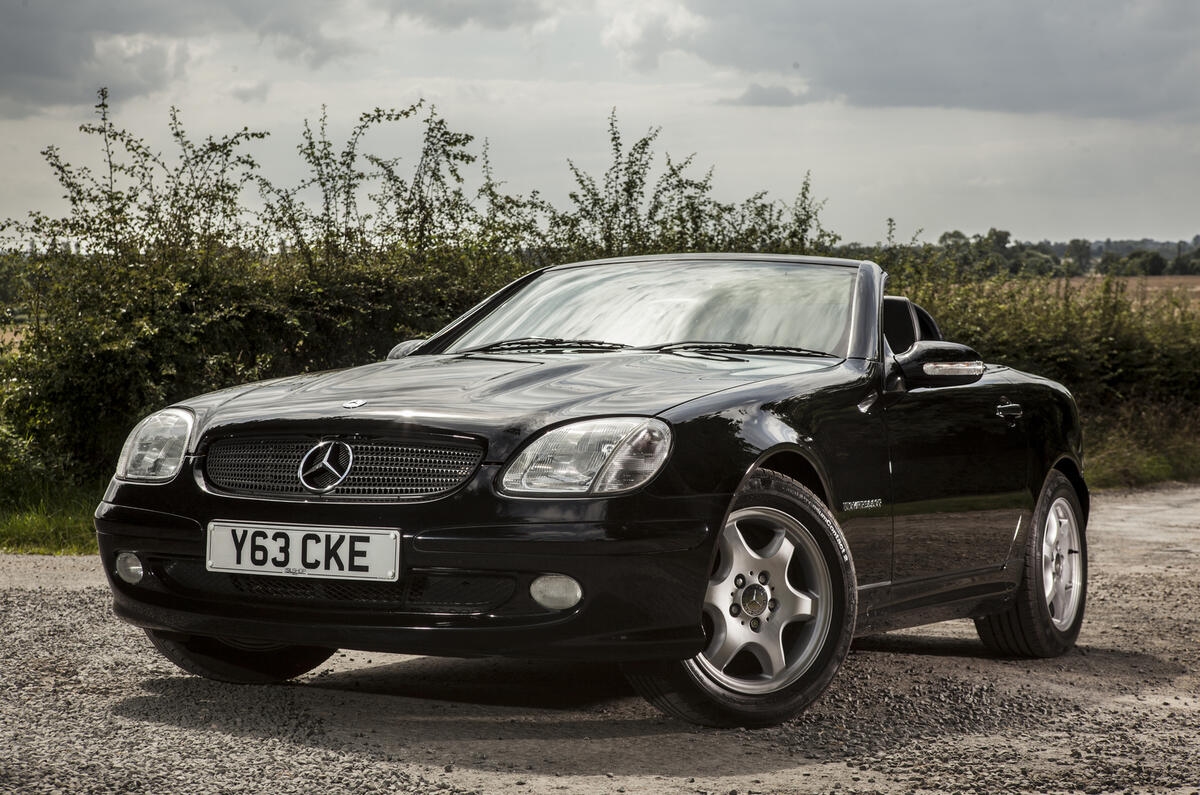There are at least three ways in which you can enjoy the original 1996 Mercedes SLK as a classic. One is to admire its svelte lines, from the contrast between its long bonnet and pert boot to the neatness of its glasshouse and the promising stance implied by its athletically wide track.
Another is to marvel at the mechanical Houdini that is its roof mechanism, this hard-bodied defence against the elements folding within itself before diving beneath a gaping rear deck-lid. And a further, decidedly authentic classic car experience is to deploy a wire brush and welder to its underside in an effort to combat its ferrous crumblings.
Driving an SLK, however, is not really a classic experience. This supposed sports car is only slightly more exciting than listening to the hum of your fridge. Even by Mercedes’ own ‘sensible trousers’ standards the SLK was a disappointment, this car dull enough to provide its driver with the metaphorical subdued shirt and shoes to match.
The problem was the SLK’s C-Class saloon bloodline. The premium minicab was the core source for the suspension, engines and heaps of other entertainment-critical hardware. There was nothing wrong in principle with the W202 saloon as a starting point, but the enlivening retune you’d expect for a car whose Sports Licht Kurz initials means ‘shortened lightweight sports’ didn’t really happen.
The suspension was nevertheless stiffened and the tyres fattened to the point that the SLK rode hard and cornered harder, but without doing anything to invigorate its occupants besides rattle their keys.
Despite its promise-laden name, this car was a cruiser, and was best bought with the 194bhp 230 Kompressor engine and five-speed automatic that most were indeed equipped with. Viewed in this way you were less likely to be disappointed, especially as the supercharger provided decent surges of performance, and the roof was a joy. It’s still mildly spectacular today, but when the SLK appeared in 1996 it was a tour de force of electro-mechanical magic, if not the first of its kind.
You could enjoy the SLK’s performance in quite a bold-looking cabin if it had been ordered with black and red leather upholstery, the red extending to sections of the facia and the doors to produce a pleasing aura of night-clubbish glamour. As owners of these now ageing SLKs are discovering, some of this effect was achieved with paint now eroded past its best, but it can be restored.






Join the debate
Add your comment
Great design, terrible lack of rust protection......shame.